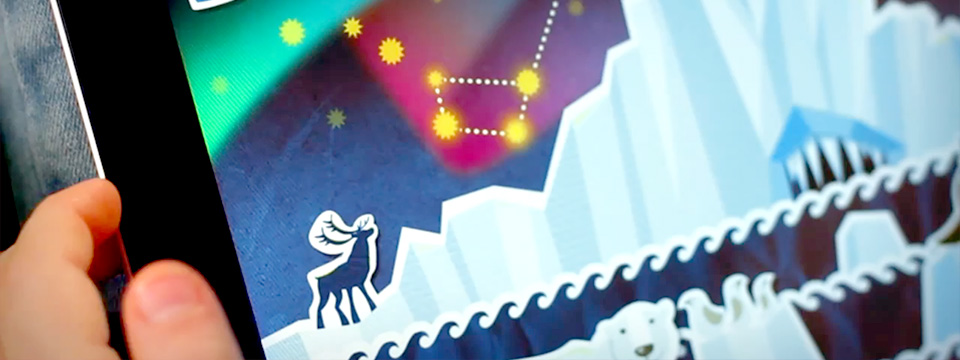“The Kids Want Mobile!” Or what you can learn at the conference of developers of children's applications

In April I had a chance to visit Berlin and managed to combine business with pleasure: visit The Kids Want Mobile! Now my mind is preoccupied with the thoughts of such guys as Christoph Niemann (illustrator, Fox & Sheep publishes his applications), Darran Garnham (commercial director of Moshi Monsters), Thijs Bosma (TribePlay), Thomas Bleyer (Ravensburger Digital), Barry O'Neill (StoryToys), Oleg Stavitsky (psychedelic Bubl), Michael Elman (creative director of Budge Studios), Stefan Bielau (co-founder of Dynamo Partners), Kika Gilbert (Tinybop, and the first Apple app called the 2013 app), Chris Haughton (a brilliant illustrator, his children's books have been published more than in 15 languages), Anttu Harlin (Gigglebug Entertainment), Verena Delius and Moritz Hohl (founders of Fox & Sheep).
They told in secret that even before the idea of the application appeared, you should know three things if you want it to become successful. First: how do you ensure that the application is of high quality in all areas: design, interactive, speed, etc. Second: you have to imagine how to optimize it for marketing and promotion. And the third: you should clearly know where and how you will promote and advertise it. Without these three components, you should not even come up with an idea for the application.
From a 12-hour stream of information, which, however, was interrupted by wonderful afternoon snacks and lunches, I will try to briefly outline the main points. Recalling the teaching methods of Yitzhak Pintosevich, we can call them "10 commandments and the main secret of the development of children's applications."
- The application should be as simple and intuitive for the child to use. Try to keep the number of texts to a minimum in order to get rid of the restriction of language localizations.
- Make the main focus of the application on gaming moments. In applications, interactive is more important than the story itself, unlike prints.
- Characters should be well remembered, potentially have the ability to simulate their character and emotions through facial expressions gestures and movements. It is necessary to develop characters not as for one story, but as if for an entire series.
- Mandatory is the presence of a children's focus group. It is necessary to observe how children of the focus age group work with the tablet, and develop applications based on these observations in the first place.
If a child cannot understand our way of learning, maybe we should use the way that he uses? - Clearly target your age audience. Toddlers 2–4 years old play with a tablet with their parents. Children older than 4–7 years old play on their own, but often resort to the help of their parents. Children over 7 years old do not allow parents to their games.
One of the most important motivations for parents to buy a tablet for a child is to free up personal time. - Many children cannot read, but they can speak and understand speech. Therefore, use voice prompts. In most cases, the sound is on when playing. Parents turn off the sound only if it is intrusive, harsh or annoying.
- Try to make the application give positive emotions, make the player happier. To do this, encourage the player’s actions with awards: visual effects (fireworks, applause) and virtual prizes (stars, cups, medals, sweets). The most effective way to make a player happier is to cause him joy and laughter.
- Use innovative device capabilities in applications. When developing, try to focus on new devices, and do not try to support old ones. Market trends suggest that most people are acquiring new devices and updating old ones.
- Use devices not only to depict real-world objects. Model an environment that can be created and known only with this device. Create applications that expand your imagination, show what is not in the real world, and not imitate it.
- Use the technological capabilities of the device for controls (gyroscope, compass, built-in camera), this enhances the interactivity of the application and makes it more fun.
The main secret of a potentially commercially successful application works by keeping the commandments described. And it consists in designing additional ways to monetize the application. They can be: the purchase of new stories, slides, embedded games and additional characters. Set a small amount of monetization, focus on the income from a large conversion.
You can’t use money analogues in children's applications, such as buying additional game coins or any other game resources for money. Otherwise, you will cause a conflict not only of the parents with the developers, but also of the parents with the children themselves. Remember, children are our everything! Try your application to make them better, smarter and happier.
